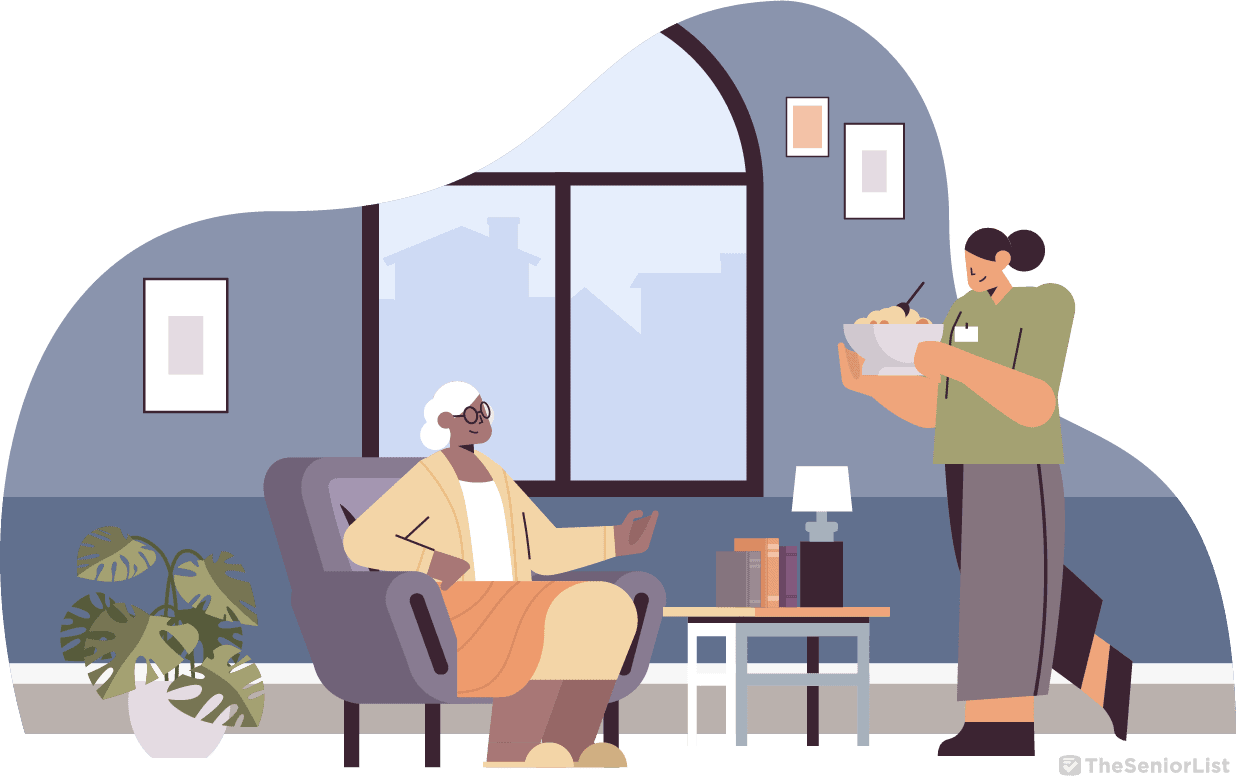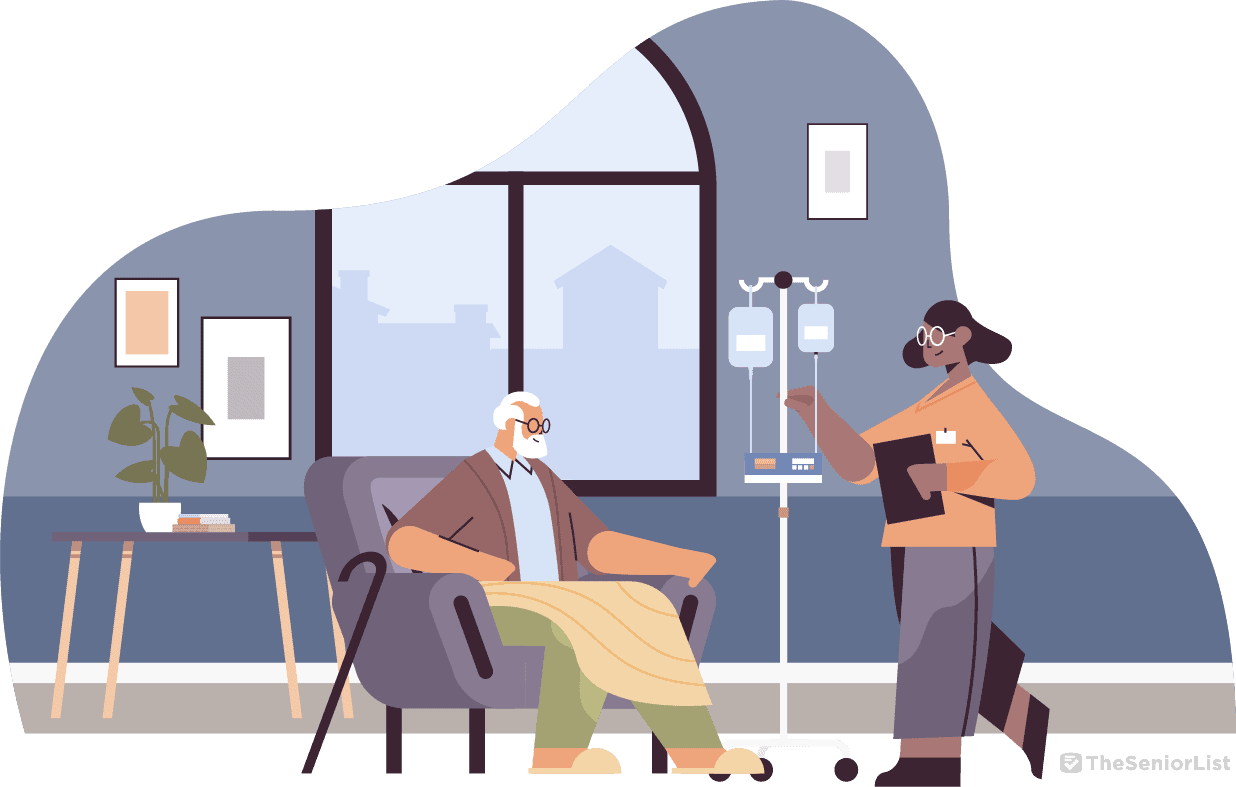What Is Palliative Care at Home?

Palliative care at home is specialized medical care that patients can receive in the comfort of their home to enhance their quality of life. An experienced nurse, nutritionist, physical therapist, or other care specialists provide this type of care.
Aimed at alleviating pain and reducing symptoms of serious or terminal illnesses, palliative care provides various services, including medication management, meal preparation, physical therapy, rehabilitation, and emotional and moral support.
What Services Are Provided With Palliative Care?
The type of services provided with palliative care at home can range from pain treatment, meal delivery, wound care to housekeeping. With palliative care at home, patients have the option of having a live-in caregiver.
By working in a home setting, caregivers can help with light housekeeping and assist patients who need help with everyday personal care tasks such as eating, bathing, or running errands. A palliative care specialist can also provide companionship and support at home by helping individuals feel less isolated, thus helping reduce anxiety.
Unlike hospice, palliative care is available to patients at any time during the course of their illness. The palliative care team can consist of nurses, nutritionists, physical therapists, or occupational therapists who work in a home setting.
Pro Tip: Are you a patient or caregiver for a loved one who is transitioning from palliative care to hospice?
Why Seek Palliative Care In-Home?
According to the National Institute on Aging, many patients receive care at nursing homes or hospitals that are not aligned with the type of care they actually want. In-home palliative care provides individualized care from caregivers who are likely to remain in the home long-term, instead of a patient having to see several different nurses or physicians outside the home.
Some of the other benefits of choosing in-home palliative care include greater peace of mind and comfort for the patient. This also means reduced trips to the emergency room or expensive medical care and nursing home stays.
Additionally, out-of-home palliative care can be more costly, since it can consist of expensive nursing homes, hospitals, or assisted living facilities. For example, the cost of assisted living has steadily risen in 2021 due to the shortage of qualified elderly caretakers. Fortunately, the lack of quality caretakers or caregiver turnover rate in a home setting is not much of a concern for those seeking at-home palliative care.
Also, consider this: In-home care can add up to approximately $4,567 monthly, compared to $8,821 at a nursing home and $4,300 at an assisted living facility. Medicare typically won’t cover assisted living costs, so this is an expense that many individuals need to think about when choosing between at-home or out-of-home palliative care.
Curious about nursing homes: Then read my comprehensive history of nursing homes to learn more about this type of care.
Care.com offers greater flexibility than traditional home care agencies.

Who Is In-Home Palliative Care Right for?
There are many reasons why individuals choose in-home palliative care. For the most part, many individuals would rather be surrounded by loved ones in a familiar setting that allows them to receive attentive care from a live-in caretaker. Additionally, it might be an option for patients with chronic illness, fatigue, kidney disease, depression, cancer, or those who seek pain management or personal care assistance.
Palliative care at home is also intended for individuals who would like a more consistent care plan. Instead of being treated at a hospital or nursing home setting with different caregivers, the option of palliative care at home gives them the opportunity to bond with a one-on-one caregiver and their streamlined care plan.
Pro Tip: A caregiver for palliative care at home can help with medication management along with other personal care tasks for individuals with disabilities or chronic illnesses.
How to Prepare for Palliative Care
If you’re ready for palliative care, there are many steps you can take to make the transition as seamless as possible. You can start by setting up a consultation with your physician. During this appointment, you can discuss some of your symptoms and their current impact on your daily activities. You can also go over your medical history and any other concerns.
From there, your physician can further advise and provide a referral for palliative care specialists or options for in-home or out-of-home care. During this appointment, you can also ask your physician about a palliative care plan and how to personalize it to make sure that your needs are being met during the course of your treatment. You can also weigh the pros and cons and discuss what you’d like to get out of a palliative care treatment option. This includes emotional and/ or physical support, or more assistance with pain management and other day-to-day assistance.
Getting Started
You should consider seeking palliative care when you start to notice that your symptoms or illness ends up greatly affecting the quality of your life. Seeking palliative care treatment earlier on can help you receive much-needed peace of mind while getting the care that you need. You can receive palliative care either at home, or at assisted living facilities, nursing homes, retirement communities, or other long-term establishments.
If you’re a caregiver, clinician, or an individual who’s curious about palliative care, you can find more resources at getpalliativecare.org or the National Palliative Care Research Center for the latest news and research on palliative care. Whether you’re a patient who’s hoping to switch to at-home palliative care, or you have a loved one who is moving from palliative care to hospice — there are many resources and support networks you can join for help.
At-Home Palliative Care — Frequently Asked Questions
-
What does palliative care at home consist of?
Palliative care at home consists of specialized care and pain management for symptoms such as vomiting, nausea, anxiety, depression, and chronic illness. The goal is to enhance the quality of life for patients with severe illnesses.
-
How long can you live with palliative care?
Palliative care is intended to help provide treatment and care which can last for several years. A patient can ultimately get better through palliative care, but some individuals with terminal illnesses may require hospice as an end-of-life care option.
-
Does palliative care mean end of life?
Palliative care does not mean end of life, even though many patients may seek treatment for life-threatening or terminal illnesses. Palliative care is meant to help alleviate symptoms and help patients feel comfortable at any stage during their illness while seeking treatment to get better.
-
What does palliative home care mean?
Palliative home care is patient-focused care for individuals with terminal or chronic illnesses. This type of specialized care can be conducted by a palliative care team either at home or a facility.


